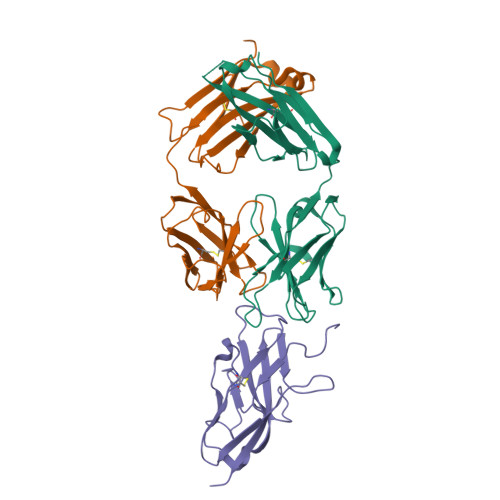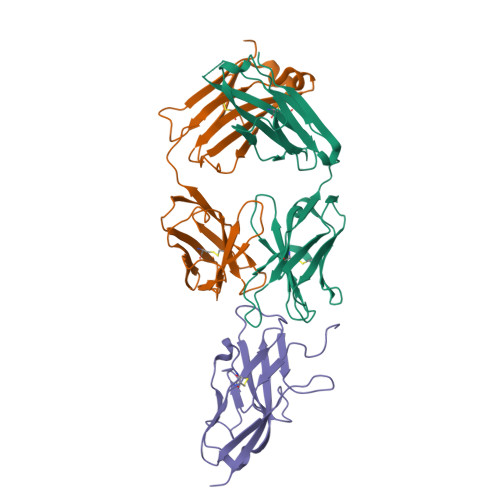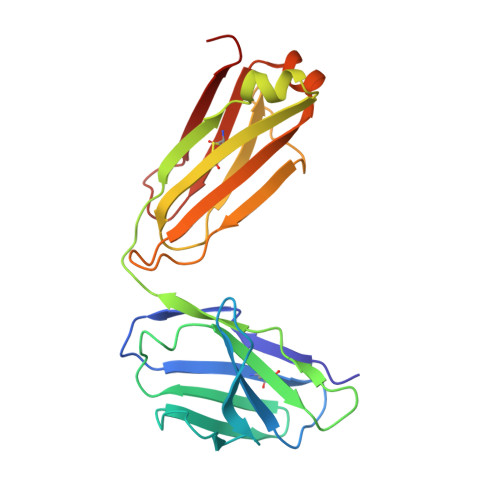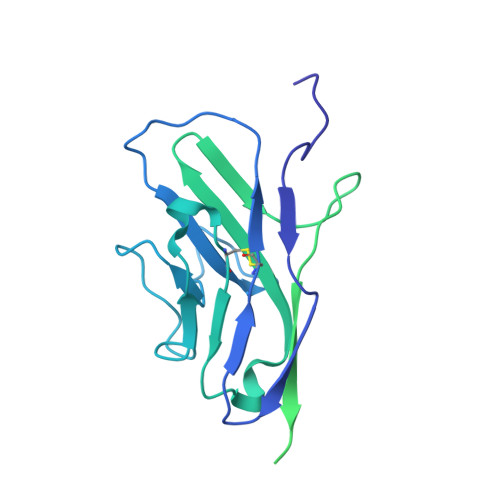Structures of the Inhibitory Receptor Siglec-8 in Complex with a High-Affinity Sialoside Analogue and a Therapeutic Antibody.
Lenza, M.P., Atxabal, U., Nycholat, C., Oyenarte, I., Franconetti, A., Quintana, J.I., Delgado, S., Nunez-Franco, R., Garnica Marroquin, C.T., Coelho, H., Unione, L., Jimenez-Oses, G., Marcelo, F., Schubert, M., Paulson, J.C., Jimenez-Barbero, J., Ereno-Orbea, J.(2023) JACS Au 3: 204-215
- PubMed: 36711084
- DOI: https://doi.org/10.1021/jacsau.2c00592
- Primary Citation of Related Structures:
7QU6, 7QUH, 7QUI - PubMed Abstract:
Human sialic acid binding immunoglobulin-like lectin-8 (Siglec-8) is an inhibitory receptor that triggers eosinophil apoptosis and can inhibit mast cell degranulation when engaged by specific monoclonal antibodies (mAbs) or sialylated ligands. Thus, Siglec-8 has emerged as a critical negative regulator of inflammatory responses in diverse diseases, such as allergic airway inflammation. Herein, we have deciphered the molecular recognition features of the interaction of Siglec-8 with the mAb lirentelimab (2C4, under clinical development) and with a sialoside mimetic with the potential to suppress mast cell degranulation. The three-dimensional structure of Siglec-8 and the fragment antigen binding (Fab) portion of the anti-Siglec-8 mAb 2C4, solved by X-ray crystallography, reveal that 2C4 binds close to the carbohydrate recognition domain (V-type Ig domain) on Siglec-8. We have also deduced the binding mode of a high-affinity analogue of its sialic acid ligand (9- N -napthylsufonimide-Neu5Ac, NSANeuAc) using a combination of NMR spectroscopy and X-ray crystallography. Our results show that the sialoside ring of NSANeuAc binds to the canonical sialyl binding pocket of the Siglec receptor family and that the high affinity arises from the accommodation of the NSA aromatic group in a nearby hydrophobic patch formed by the N-terminal tail and the unique G - G ' loop. The results reveal the basis for the observed high affinity of this ligand and provide clues for the rational design of the next generation of Siglec-8 inhibitors. Additionally, the specific interactions between Siglec-8 and the N-linked glycans present on the high-affinity receptor FcεRIα have also been explored by NMR.
Organizational Affiliation:
CIC bioGUNE, Bizkaia Technology Park, Building 800, Derio-Bizkaia48160, Spain.




















